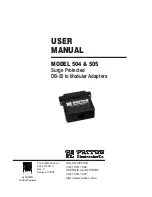
Chapter 3 Deployment
Manual VIPA System SLIO
3-8
HB300E - IM - RE_053-1CA00 - Rev. 11/29
Accessing the System SLIO
In the following you will find the description of accessing the following
System SLIO areas via CAN:
•
I/O area
•
Parameter data
•
Diagnostics data
Information concerning the allocation of these areas may be found in the
description of the corresponding System SLIO module.
To configure the slave connections in your own configuration tool, you’ve
got all the information about your VIPA-modules in form of an electronic
data sheet file. Install this EDS file in you configuration tool. The current
EDS file may be found in the download area of www.vipa.de.
More information about installing the EDS may be found at the online help
of the according engineering tool.
The I/O area may be accessed via the following objects:
•
PDO
•
SDO
In PowerON the CAN coupler creates a
default configuration
(see below).
As soon as the CAN coupler is set to operational with the NMT command
(01h: "enter operational"), the input data of the digital, analog and function
modules are transferred once via TxPDO.
In the default configuration the TxPDOs of every module with exception of
the analog modules are set to event controlled. This means as soon as
data are changed, these were transferred via TxPDO.
With the analog inputs per default there is no data transfer at change of
value. This is to avoid overloading the bus.
By writing a value > 0 to index 0x6423/subindex 0 in the object directory
the module is triggered to send PDOs at change value. With writing 0 to
this index this function is again deactivated.
The output data are written via RxPDOs and directly sent to the outputs.
Here PDO length is checked by the CAN coupler.
Overview
EDS file
Accessing
I/O area
Access via PDO
















































